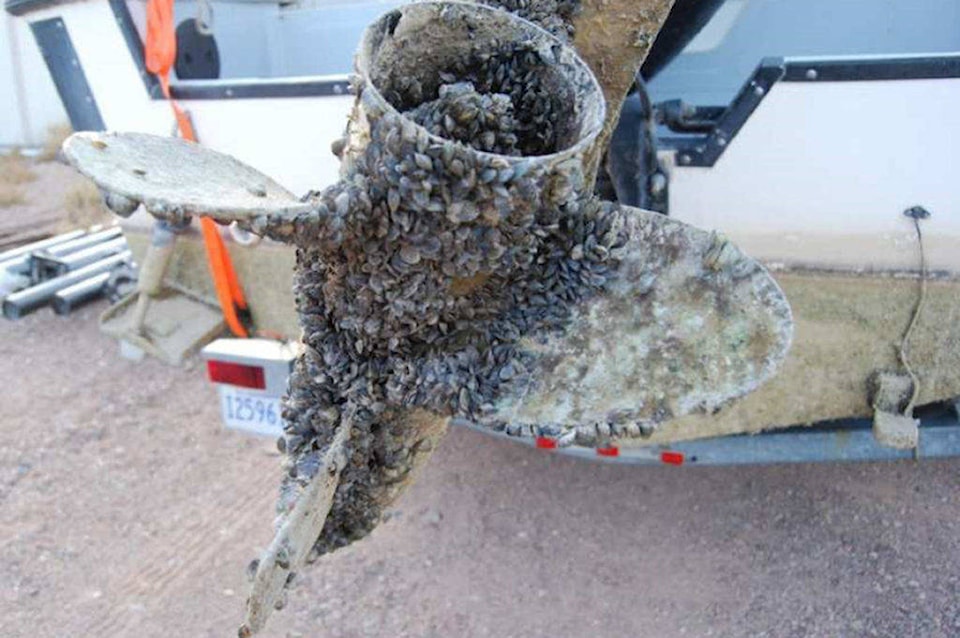The territory has a new top five invasive species of concern list from the Yukon Conservation Data Centre. These are species to watch due to their existing impacts, or due to the probable impacts if they establish in the Yukon.
The five species are zebra mussels, creeping thistle, seven-spotted lady beetle, smooth brome and sweet clover.
Bruce Bennett put together the list after the Yukon government was asked what the territory’s top five invasive species are.
“I made a suggestion on what are the most topical ones because we really don’t have a proper ranking system here in the Yukon,” said Bennett. “So it’s an unofficial top five.”
Bennett said he chose the five species by what is the “biggest concern by sector.”
Zebra mussels have not been found in Yukon waters yet but Bennett said if it’s introduced it could have devastating effects.
“We don’t have any zebra mussels in the Yukon yet but it’s one of those ones from an environmental perspective that could totally change things,” said Bennett. “The only thing limiting the zebra mussel is their introduction.”
Bennett said if the mussels arrive in the territory, they’ll change “the dynamics of our fisheries, affect infrastructure, damage dams and people wouldn’t be able to walk on the sand in bare feet anymore.”
“It would change the dynamics of the Yukon,” said Bennett. “Once they are in the water there’s virtually nothing we can do.”
Bennett said the Department of Environment is responsible for aquatic invasive species and is committed to teaching people about “clean, drain and dry” to avoid moving things between water bodies.
“Sweet clover made the list because it’s a big problem for highways,” said Bennett.
“It attracts wildlife to the highway corridors,” said Bennett. “It increases wildlife collisions and can grow so tall it can obstruct vision. From a highway’s point of view, sweet clover is probably the greatest exotic species of concern.”
The seven-spotted lady beetle was introduced to the Yukon because people could purchase them online for their greenhouses, said Bennett.
Bennett said the seven-spotted lady beetle is outcompeting the native transverse lady beetle.
“The concern is that they will displace the native species of lady beetle,” said Bennett.
The creeping thistle is in every province or territory in Canada except Nunavut, Bennett said. Although it is in the Yukon it hasn’t taken off yet, however, it is of concern to those in the agriculture sector.
“It’s a real nasty, prickly thistle that once it gets established is almost impossible to get rid of,” said Bennett.
“The problem isn’t that it stops you from growing things but it reduces the competitive advantage because right now you can guarantee that any grain that comes from the Yukon is free of creeping thistle.”
Bennett said the Yukon’s agriculture is “pretty pristine” and keeping the creeping thistle out will keep it that way.
Smooth brome was a “difficult” species to add to the list because of its agricultural benefits, said Bennett.
“It’s our number one cash product,” said Bennett. “It’s an important hay crop, if you want to feed your horses or cattle, anything that eats hay smooth brome can’t be beat.”
Smooth brome outcompetes willows, said Bennett, and for a while it was planted on the sides of highways. Climate change is a big factor in smooth brome making the top five list.
“The things community services are burning in the springtime when they try and reduce fuel sources along roadways is smooth brome,” said Bennett. “It’s a threat because it is an ignition source.”
If planted in the correct spaces smooth brome is a useful plant but there are severe consequences of putting the plant in the wrong places, said Bennett.
Andrea Altherr, the executive director of the Yukon Invasive Species Council, said the species aren’t new to the Yukon, but, they are the ones catching people’s attention.
“We would like to highlight those especially, but we have a whole list of over 20 species of concern,” said Altherr.
Both Altherr and Bennett said zebra mussels are of greatest concern because they are not yet introduced but would have the worst impacts on the Yukon’s environment.
If people see zebra mussels or any of the other invasive species on the list, Altherr said they can email the Yukon Invasive Species Council at info@yukoninvasives.com. Or people can also use the phone app iNaturalist to take photos and document the invasive species.
Bennett is also recommending people reach out to the Department of Environment if they come across invasive species.
Contact John Tonin at john.tonin@yukon-news.com
